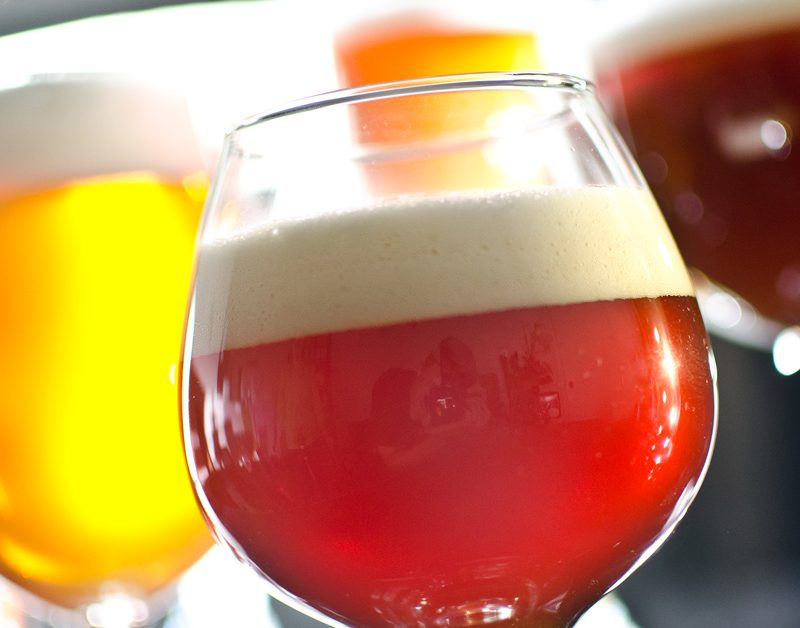In 1994 when Troy Paski founded Hoppy Brewing Company (HBC) in San Jose, California, he was lucky to have Pete Slosberg as a mentor. Paski recalled talking with Slosberg, the man behind Pete’s Wicked Ales: “Before I opened HBC, I asked him where he thought the industry would be in five years, and his thoughts were, ‘well, there’s only so many tap-handles and shelf-space available.’”
With HBC, Paski set out to find those tap-handles, and nearly 20 years later, he’s done just that. “We began as the new kid on the block with seven draft accounts and a ton of fanfare, or basically ‘the next big thing’ in Silicon Valley,” said Paski.
“Pete told me not to get into the microbrewery industry, but I did anyway and he [Slosberg] was the first in line to try our beer at our debut at the Small Brewers Festival on July 15, 1994,” said Paski. “His profound comment that I remember to this day was, ‘Congratulations! You did something that 90 percent of people talk about doing and very few actually accomplish—moving an idea to reality—so enjoy the weekend and remember on Monday that it’s a business and get back to work.’”
Heritage Beers and the Next New Big Thing
By Troy Paski, founder of Hoppy Brewing Co.
In an attempt to carve out a niche in the nascent growing microbrewery industry, we decided to distinguish ourselves from the competition by providing the consumer with an easily identifiable package that was unlike anything in the market, along with a traditional India pale ale that at the time had not been readily available to consumers.
Our fun package, with our little smiley face-like logo, further helped differentiate us. This branding has proven to be an asset to our company, which has been clearly evident from the enthusiasm generated by consumers over our company’s flagship product and our subsequent history.
Albeit HBCs core brands don’t attract all of today’s uber-beer-geeks whose palates have become more sophisticated over the years; they do stand the test of time with those who enjoy drinking a craft beer on a daily basis. That said, our core brands that were once on the higher end of the hoppy scale, 20 years later, have been replaced by the next new big thing—ever-increasing hop and malt ratios, which reflects a change in beer drinkers palate progression.
As microbrewers struggled, or excelled in gaining shelf-space and tap-handles in local establishments during those formative years, they also got caught up in the cycle of always providing something new, rather than relying on their core brands to maintain that space, which is even more evident today. This has led brewers down the road of ever increasing IBUs, ABVs, new labels and names of their beers.
With the amount of brewers getting into the industry today, micros, nanos and tasting rooms are caught up in the cycle of producing new big things on a never-ending basis, without the conscience thought of building brands. At what point does palate fatigue from over-hopped and high ABV beers end and more palatable session beers return?
What is the real cost of brand proliferation, artwork creation, label production, inventory management and staff training to promote the latest brand du jour. Is this model really self-sustaining in the long-term as we experience another wave of unprecedented growth in the craft beer industry?
HBC has struggled to provide a diverse variety of nine beers on tap and two monthly seasonals, while also ensuring the year-round brands are consistent in quality and award-winning in nature. Retailers are always asking for our new seasonal to promote—something that will excite the customer who’s looking for something new-fangled. Has the craft beer industry entered an age of throw away brands just like the music industry is full of songs du jour?
Yes, new and shiny is nice, but will it last in the long run? Tell us what you think!
CraftBeer.com is fully dedicated to small and independent U.S. breweries. We are published by the Brewers Association, the not-for-profit trade group dedicated to promoting and protecting America’s small and independent craft brewers. Stories and opinions shared on CraftBeer.com do not imply endorsement by or positions taken by the Brewers Association or its members.


Share Post